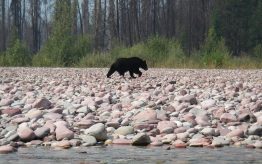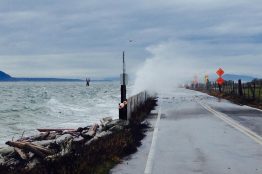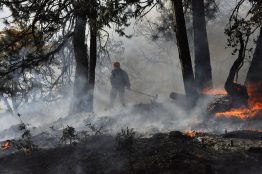Under climate change, plants and animals will shift their habitats to track the conditions they are adapted for. As they do, the lands surrounding rivers and streams offer natural migration routes that will take on a new importance as temperatures rise. An open-access study led by the University of Washington pinpoints which riverside routes in Washington, Oregon, Idaho and western Montana will be the most important for animals trying to navigate a changing climate.
Read more at UW News »Heatwaves, floods and traffic mayhem. What to expect in Washington State with global warming of 1.5°C
The UW Climate Impacts Group has released a brief discussing the implications of a 1.5°C increase in average temperatures for Washington State. No Time to Waste summarizes The Intergovernmental Panel on Climate Change’s Special Report on Global Warming of 1.5°C, and projects the impacts likely to be realized in Washington as soon as 2030. The brief assesses the current state of warming globally and outlines the most profoundly felt impacts likely to affect communities in Washington, including disruptions to transportation, infrastructure, public utilities and port operations.
Read more from UW Climate Impacts Group »UW, Tableau create interactive tool to explore more than a century of Pacific Northwest weather observations
UW College of the Environment and Seattle visual analytics company Tableau Software teamed up to create a new, interactive visualization for historical observations of temperature and precipitation in Washington, Oregon, Idaho and western Montana, and for Washington snowpack. The free online tool lets anybody interact with the records going back as far as 1881 and look for significant trends. “This tool lets anyone, from researchers to meteorologists to members of the public, look at the actual data to motivate why we should care about our climate changing, and see how it is changing in our own backyard,” said project lead Karin Bumbaco, the assistant state climatologist for Washington.
Read more at UW Today »New resources support tribes in preparing for climate change
As the natural world responds to climate change, American Indian tribes across the country are grappling with how to plan for a future that balances inevitable change with protecting the resources vital to their cultural traditions. The University of Washington Climate Impacts Group and regional tribal partners have developed a collection of resources that may be useful to tribes at any stage in the process of evaluating their vulnerability to climate change.
Read more at UW Today »Sea-level rise report contains best projections yet for Washington’s coasts
One certainty under climate change is that global ocean levels are rising. A new report led by Washington Sea Grant and the University of Washington’s Climate Impacts Group provides the clearest picture yet of what to expect in Washington state. The report includes projections for more than 150 different sites along the Washington coastline, from all marine shorelines in Washington state.
Read more at UW News »




